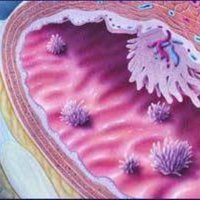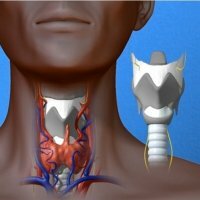Measures to prevent skin cancer

Types of the disease
There are 3 main types of skin cancer: basal cell carcinoma( deep skin carcinoma), squamous cell carcinoma( skin carcinoma of the skin) and melanoma are the most serious form of the disease. Basal cell and squamous cell carcinomas, otherwise called non-melanoma skin can cause serious health problems. But the mortality rate among patients with these forms of skin cancer is very low. If their diagnosis and treatment occur in the early stages of the onset of carcinoma, more than 95% of the cases of these diseases can be successfully cured. If the required treatment is not performed, basal and squamous cell carcinomas can cause serious damage to health. And also can disfigure a person's appearance.
More than 75% of skin cancer deaths occur in cases of melanoma. The disease can spread to other organs, usually to the lungs and liver. Cases of melanoma, detected in a timely manner, can usually be cured. However, if melanoma is found in the late stages of the disease, it usually spreads to the body and leads to death.
Who is at risk?
Risk factors for basal and squamous cell carcinoma:
- Light skin color.
- Cases of skin cancer in the family.
- Already a case of skin cancer in the past.
- Permanent( "chronic") exposure to the sun( squamous cell carcinoma).
- Cases of severe sunburn, transferred at an early age( basal cell carcinoma).
- A large number of moles of a certain type.
- Freckles, as an indicator of increased sensitivity of the skin to solar radiation and its location to damage by sunlight.
Prevention measures
The number of cases of skin cancer can be significantly reduced, changing the stereotypes of behavior in everything that concerns sun exposure. Special educational programs designed for children and adults are extremely important. Parents and caregivers can be especially receptive to the information contained in the training programs on how to keep children from being over-exposed in the sun.
Despite the fact that scientifically independent examination of the skin can not be considered an effective measure to prevent skin cancer, for people who are at risk, regular checkups make sense. Anyone who finds on his body a suspicious or changing size and shape of a birthmark or any other increasing in size or unusually looking skin formation, should immediately consult a doctor.
It would seem that the mortality from skin cancer, as well as the actual incidence of skin cancer, can be significantly reduced( and in many cases they can be avoided altogether) by significantly reducing the time spent in the sun. However, most citizens do nothing to protect themselves from the harmful effects of sunlight. According to the survey results, only 32% limit their time in the sun. Only 29% regularly use sunscreen lotions. Only 28% wear sunscreen while in the sun.
Recent studies have discovered the fact that many adults know very little about skin cancer in general and about the risk factors for the onset of the disease in particular. Approximately 50% of men and 35% of women over 18 do not know the meaning of the word "melanoma".Young people aged 18 to 24 years were the least informed about the risk factors that affect the occurrence of skin cancer. Almost unaware of the alarm signals that can help identify the disease at an early stage and those parts of the body that are most often affected by melanoma.
Teaching children to prevent skin cancer is just as important as adult education. Almost 80% of the time a person spends on the sun during his entire life falls on his childhood( up to 18 years inclusive).Thus, it is children who have the best opportunity to successfully take advantage of the benefits that the proper application of sun protection measures. In addition, the habit of a healthy lifestyle, laid in early childhood, often persists for life. Parents and organizations leading health work among children and adolescents, schools and public organizations can develop a strategy and tactics to encourage and strengthen the children's habits of protecting themselves from solar radiation. For example, avoiding being in direct sunlight. Or planning your day so that the stay in the fresh air fell on those hours when ultraviolet radiation is the least intense. Also it is necessary to help children radically change their attitude to stay in the sun. For example, you need to fight the popular opinion that a tanned person looks more attractive.
Expert advice
Reduce the residence time in direct sunlight, especially from 10 am to 4 pm. If you still have to be in the sun, take the following precautions:
- Wear a wide-brimmed hat, long-sleeved shirt, long pants and sunglasses.
- Use sunscreen lotion with a level of protection against sunlight( SPF) not lower than 15 units. This will help you protect your skin from ultraviolet rays A and B.
- When planning your stay in the fresh air, take into account the current UV Index( this data can be found on the weather forecast websites for the day).
- In addition, avoid using artificial sources of UV radiation, such as tanning lamps in solariums and solar lamps.



